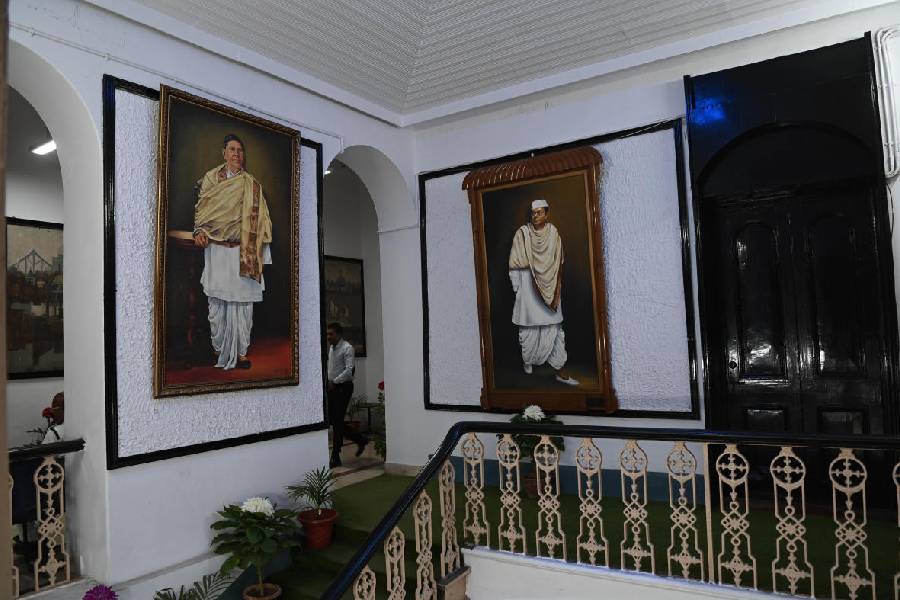On April 16, 1924, Chittaranjan Das became mayor of Calcutta.
A month later, he appointed a 27-year-old Subhas Chandra Bose as chief executive officer of the Calcutta Corporation.
This year, 2024, marks the centenary of the duo’s entry into the civic body.
Calcutta’s present mayor, Firhad Hakim, has told The Telegraph the corporation plans a special issue of Purasree, its official magazine, to mark the occasion.
Purasree too turns 100 this year since its earlier avatar, the Calcutta Municipal Gazette, was launched in November 1924 with Amal Home as editor, a civic official said.
The entry of Das and Bose into the corporation changed the way civic services were delivered. The corporation ventured into newer territories, such as opening schools for the poor and setting up a kitchen for the distribution of free milk among the poor.
It also marked the takeover of local governments by Indians and an increase in the number of elected members over nominated ones, said Alapan Bandyopadhyay, former Calcutta Municipal Corporation (CMC) commissioner and one-time Bengal chief secretary.
“It was a step forward towards the Indianisation of local government,” he said.
“A Calcutta Corporation managed by Indians was made possible because of the Calcutta Municipal Act, 1923, which was an accomplishment of Surendranath Banerjee, who was then minister for local self-government. This Act ensured Indianisation of the bigger local bodies like the Calcutta Corporation and prioritised the presence of elected members over nominated ones.”
In his book The Indian Struggle, Bose wrote: “Larger powers had been conferred on the municipality, the franchise had been considerably enlarged and the elective element strengthened. Under the constitution, it was possible for the Swaraj Party to capture the municipal administration if they were successful at the polls.”
The Swaraj Party, which Das formed after coming out of the Indian National Congress — though he did not fully distance himself from the Congress — won the polls “with a very safe majority”.
Hakim said: “We have planned a special issue of Purasree. We will also garland the portraits of Das and Bose on the days they became mayor and chief executive officer.”
A CMC official said the special issue would also highlight the origin of the Calcutta Municipal Gazette. The issue will include content on Das’s role as mayor. The official said a special issue on Das, too, had been discussed.
“The Gazette was discontinued in 1977 and from 1978 the publication of Purasree started,” the official said.
When Das became mayor, the office entailed a one-year tenure unlike the current five-year tenure. Das was appointed mayor again on April 1, 1925.
Bose, who was appointed CEO on May 17, 1924, had hardly been in the post for five months when he was arrested by the British police on October 25. However, he continued to function as CEO of the Calcutta Corporation from Alipore Central Jail for the first few weeks after his imprisonment.
Six years later, on August 22, 1930, Bose was elected mayor of Calcutta while in jail. He was released the following month. But as with his stint as CEO, he could not serve his full term as mayor, either. On January 26, 1931, he was arrested, charged with rioting and sent to prison.
In His Majesty’s Opponent: Subhas Chandra Bose and India’s Struggle Against Empire, historian and Bose’s grandnephew, Sugata Bose, wrote: “Subhas Chandra Bose was elected mayor of Calcutta while in prison, defeating the incumbent, Jatindra Mohan Sengupta. Both belonged to the Congress party, so the election was something of an internecine conflict.”
Historian Suranjan Das said: “C.R. Das was a great champion of the cause of Muslims. In undivided Bengal, the share of the Muslim population was more than that of Hindus, but the share of Muslims in jobs was lesser. Das wanted to correct this imbalance.”
The former vice-chancellor of Calcutta University and Jadavpur University added: “Bose considered Das his guru and, after he was elected mayor, Bose said in his speech that he was doing what Das had started.”
Das’s deputy in the Calcutta Corporation was Husain Shaheed Suhrawardy, then a promising young Muslim politician who later became prime minister of Bengal and, post-Independence, the Prime Minister of Pakistan.
Around the time Das became mayor of Calcutta, Jawaharlal Nehru, Vallabhbhai Patel and his brother Vithalbhai Patel assumed charge of the municipalities of Allahabad, Ahmedabad and Bombay, respectively.










